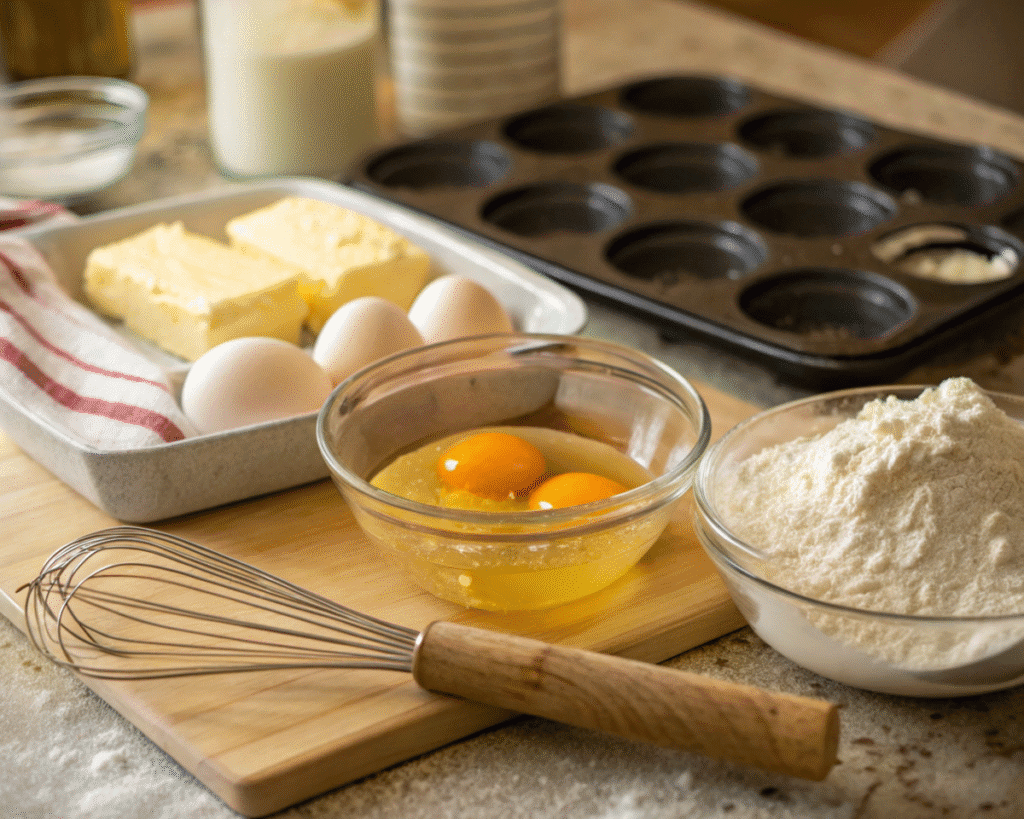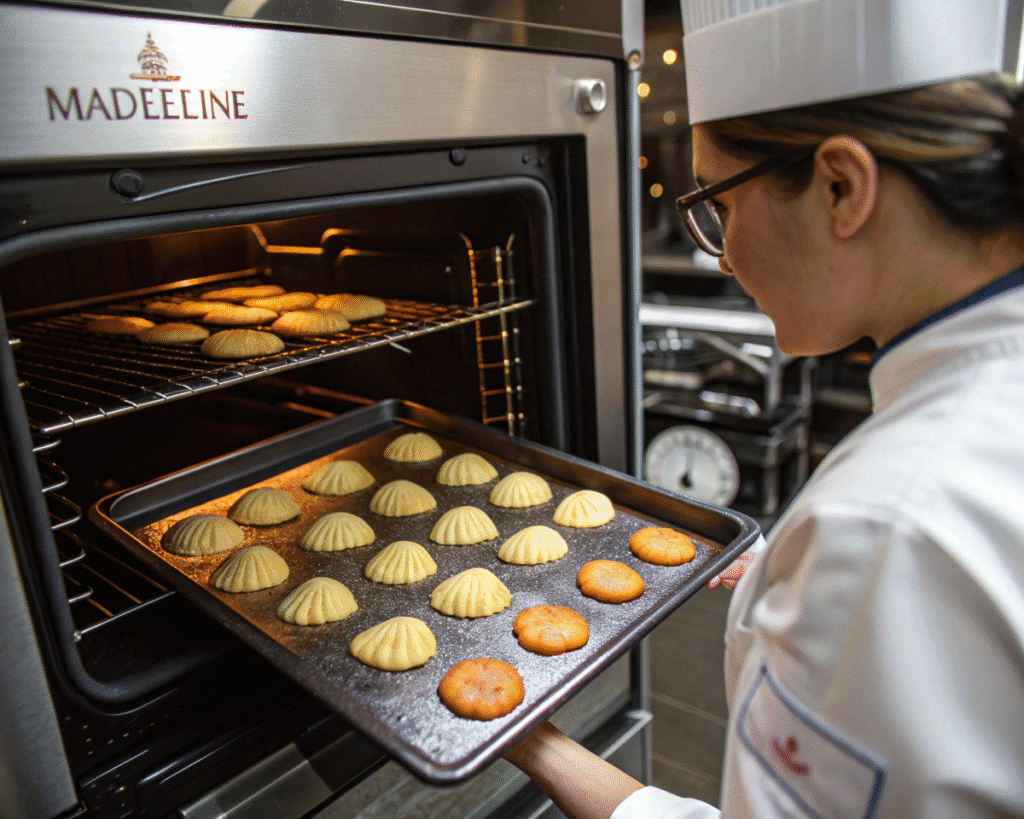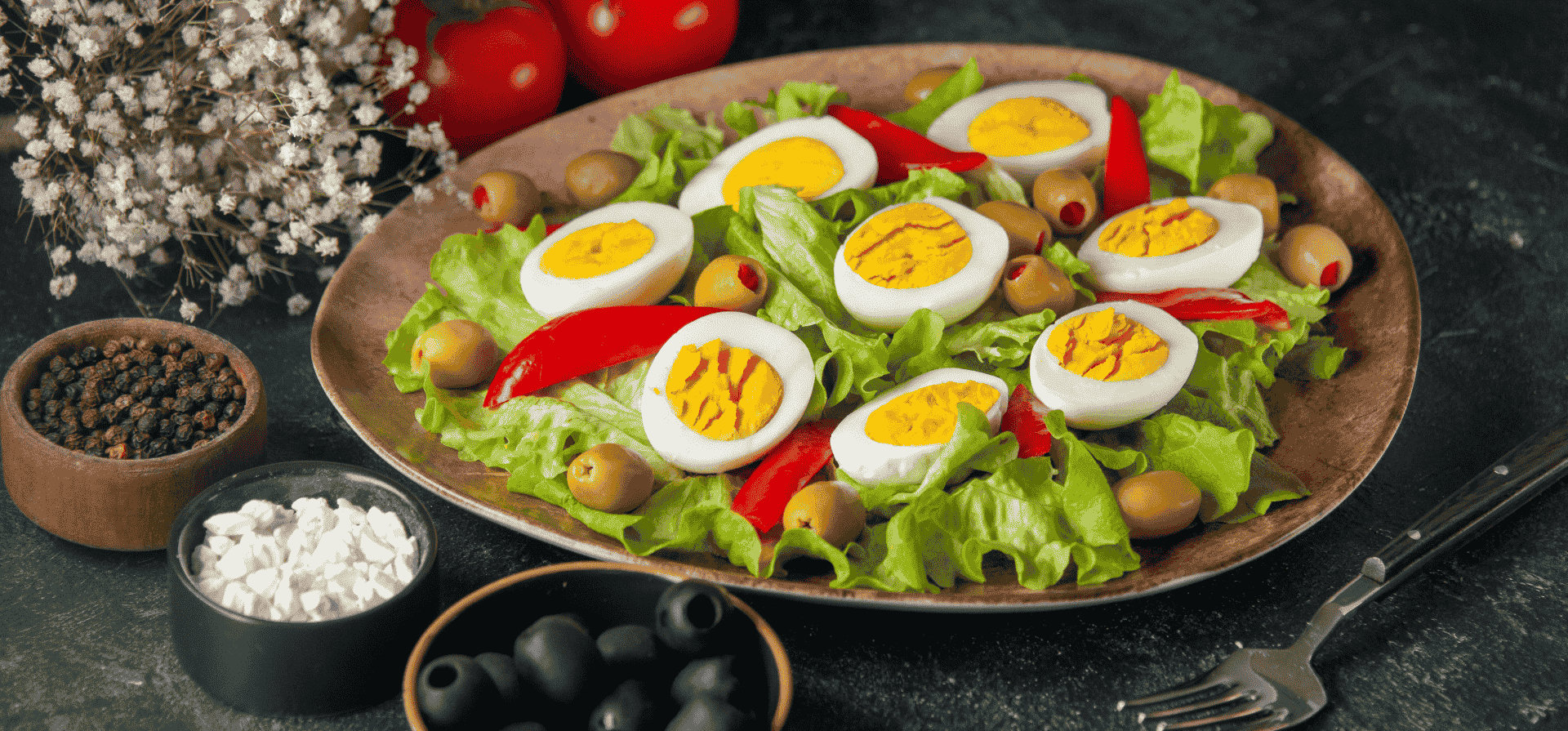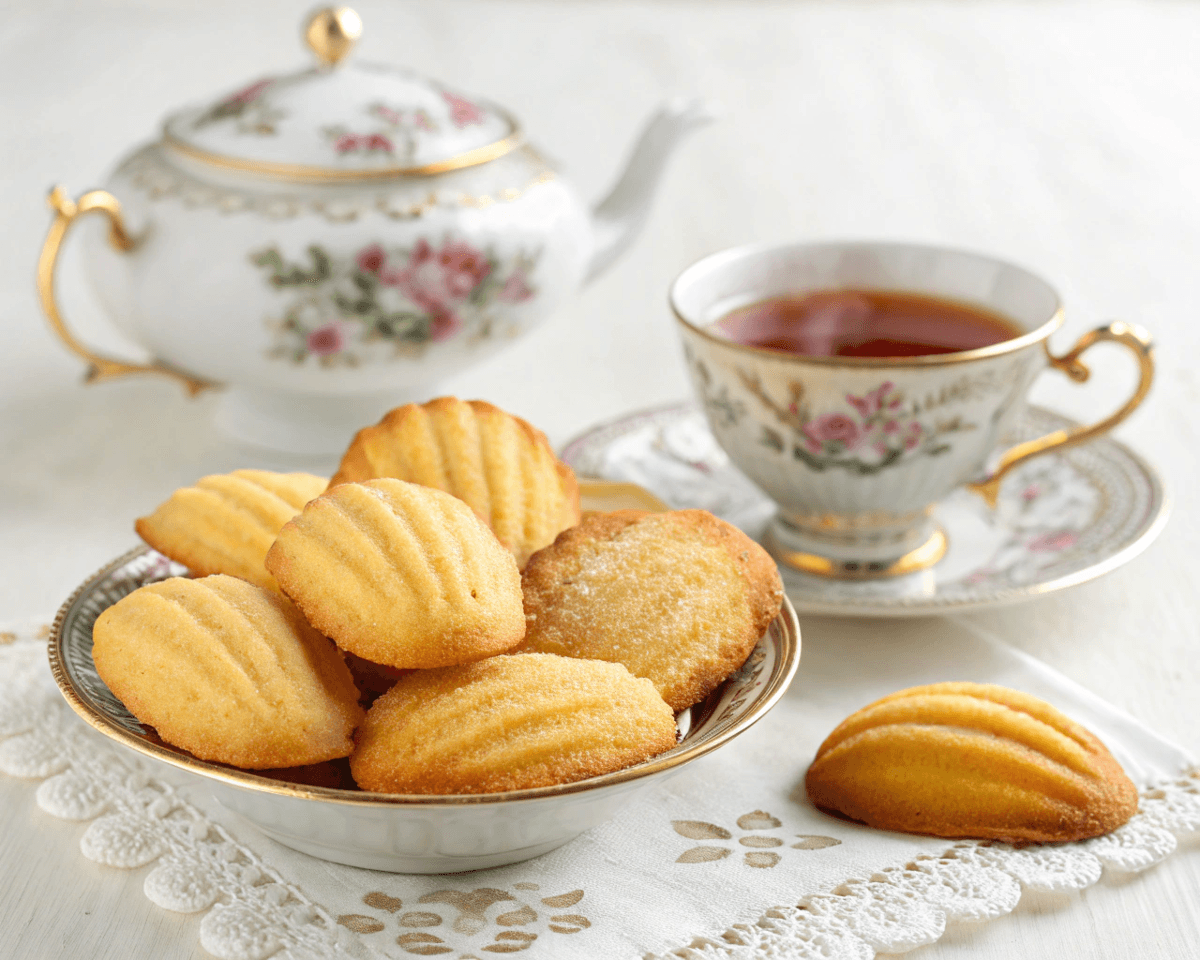The Ultimate Guide to Madeleine Cookies: A Perfect Blend of Tradition and Taste
Welcome to the delicious world of Madeleine cookies! These delightful treats, with their signature shell shape and delicate texture, have won the hearts of many across the globe. Whether you’re a baking enthusiast or just curious about this iconic French dessert, this guide will take you through everything you need to know—from the history of these sweet bites to step-by-step instructions on how to make the perfect Madeleine cookies at home. We’ll explore common mistakes to avoid, creative variations you can try, and even pairings that will elevate your Madeleine experience.
So, grab your apron and let’s dive into the sweet, buttery world of Madeleine cookies!
Introduction to Madeleine Cookies
What are Madeleine Cookies?
Madeleine cookies are small, shell-shaped cakes that originated in France, specifically in the Lorraine region. Often referred to as a hybrid between a cookie and a cake, Madeleines are tender, light, and slightly spongy. Their characteristic shape comes from the Madeleine pan, which molds them into a scalloped form.
These cookies are perfect for an afternoon tea or coffee, where their delicate texture and flavor complement your favorite beverages. Traditionally, Madeleine cookies are made with simple ingredients—flour, butter, eggs, sugar, and a hint of lemon or almond extract. Despite their straightforward ingredients, their delightful taste is anything but simple.
Madeleines have become more than just a treat; they are a symbol of French culture. Their unique shape and buttery goodness make them stand out in the world of baked goods, and they’ve captured the imaginations of bakers everywhere.
The Iconic Shell Shape and Its Significance
What truly sets Madeleine cookies apart from other cookies is their distinctive shell shape. This shape isn’t just for aesthetics—it carries historical significance, too. It’s said that the Madeleine’s shell design was inspired by the scallop shells worn by pilgrims in the Middle Ages, a symbol of a journey or pilgrimage. The cookie’s design adds to its charm, making it a beloved choice for special occasions, gift giving, or simply to indulge in a moment of nostalgia.
Additionally, the Madeleine’s appearance is closely tied to French culture, especially through literature. The famous writer Marcel Proust used the Madeleine cookie as a metaphor in his novel In Search of Lost Time, where the taste of a Madeleine dipped in tea brought back memories from the protagonist’s past. This literary connection has cemented the Madeleine as an iconic French treat, symbolizing not just flavor, but memory and tradition.
The History and Evolution of Madeleine Cookies
From France to the World: Madeleine’s Global Journey
The Madeleine cookie has a rich and storied history that dates back centuries. While its exact origins are debated, most sources point to the Lorraine region of France as the birthplace of this iconic treat. Legend has it that the Madeleine was named after a servant girl named Madeleine, who baked these cookies for King Louis XV. Whether or not this story is true, the Madeleine quickly became popular throughout France, especially in the 18th century.
Over time, Madeleine cookies found their way beyond France’s borders, becoming beloved in many parts of the world. Today, they are as popular in cafes across Europe as they are in the United States. Their delicate, buttery flavor and charming shell shape make them a favorite for tea time, gifting, or simply as a sweet indulgence.
The Madeleine’s rise to global fame wasn’t just due to its taste—it was also tied to French culture and history. The treat became even more famous when it was immortalized by French author Marcel Proust in his novel In Search of Lost Time. In this literary work, Proust uses the Madeleine cookie as a symbol of memory and nostalgia, further cementing the cookie’s place in the hearts of many. Since then, the Madeleine has become more than just a snack; it’s a cultural icon.
Madeleine’s Literary Fame
In Proust’s famous scene, the protagonist dips a Madeleine cookie into tea, and the taste instantly transports him back to his childhood, sparking a flood of memories. This moment not only made the Madeleine famous in literary circles but also elevated it to a symbol of the power of sensory experiences in evoking memories.
Beyond its literary fame, the Madeleine became a symbol of French nostalgia and elegance. Even though the cookie’s humble origins trace back to a servant’s kitchen, it has become synonymous with French sophistication. People from all walks of life enjoy Madeleine cookies, whether as a simple treat or as part of a larger cultural experience.
Ingredients and Preparation of Madeleine Cookies
Essential Ingredients for Perfect Madeleines
Making Madeleine cookies requires just a handful of simple ingredients, but the key to achieving the perfect texture and flavor lies in how they are combined. Here’s a quick look at what you’ll need:
| Ingredient | Amount | Purpose |
|---|---|---|
| All-purpose flour | 1 cup | Provides structure to the cookies. |
| Eggs | 2 large | Bind the ingredients and provide structure. |
| Granulated sugar | 3/4 cup | Sweetens the batter and helps with texture. |
| Unsalted butter | 1/2 cup (melted) | Adds richness and a tender crumb. |
| Baking powder | 1 tsp | Helps the cookies rise for a light texture. |
| Vanilla extract | 1 tsp | Adds flavor. |
| Lemon zest (optional) | 1 tsp | Adds a refreshing citrus note. |
With just these basic ingredients, you can make delicious Madeleine cookies that are soft, buttery, and light. However, some bakers add their own variations, such as a splash of almond extract or a dusting of powdered sugar for decoration. Feel free to get creative!
Step-by-Step Guide to Making Madeleine Cookies

Now that you know what ingredients you need, let’s go over how to make Madeleine cookies. The process is fairly simple, but a few key steps will ensure your Madeleines turn out perfectly every time.
- Preheat the Oven and Prepare the Madeleine Pan
Begin by preheating your oven to 375°F (190°C). Then, grease your Madeleine pan with butter or non-stick spray and dust it lightly with flour. This will prevent the cookies from sticking to the pan. - Make the Batter
In a large mixing bowl, whisk together the eggs and sugar until the mixture becomes thick and pale. Gently fold in the melted butter, vanilla extract, and lemon zest (if using). Then, sift in the flour and baking powder, and mix until just combined. The batter should be smooth but thick. - Fill the Pan and Bake
Spoon the batter into each Madeleine mold, filling them about two-thirds full. Bake for 10-12 minutes, or until the edges are golden brown and the centers spring back when touched. - Cool and Serve
Once baked, remove the Madeleines from the pan and let them cool on a wire rack. Serve them warm or at room temperature with a cup of tea or coffee.
Common Mistakes to Avoid When Baking Madeleines

Overmixing the Batter
When making Madeleine cookies, it’s tempting to mix everything quickly, especially when you’re in a rush. However, overmixing the batter can result in dense, chewy cookies rather than the light, airy texture we all love. The key to a perfectly delicate Madeleine is to gently fold in the flour and baking powder once the wet ingredients are combined. This will ensure the batter retains enough air to create that fluffy, cake-like interior.
To avoid this mistake, mix just until the dry ingredients are incorporated. If you notice lumps, it’s okay; they’ll bake out during the cooking process. Overmixing may also cause the Madeleine cookies to lose their signature dome shape, so it’s crucial to stop once everything is blended.
Underbaking or Overbaking
Achieving the right baking time is essential for Madeleine cookies. If you underbake them, they’ll be too soft and doughy in the middle. On the other hand, overbaking can lead to dry, overly crisp cookies. The ideal Madeleine should have a golden-brown edge with a soft, tender center that slightly springs back when touched.
To prevent this, keep a close eye on your Madeleine cookies as they bake. Start checking for doneness around 10 minutes, and don’t hesitate to rotate the pan if your oven has hot spots. The best method is to trust your senses—once you smell the irresistible scent of baking Madeleines, it’s time to check them!
Creative Variations on the Classic Madeleine Recipe
Adding Flavors and Fillings
While the classic Madeleine cookie recipe is beloved for its simplicity, there’s always room for creativity! You can easily modify the flavor profile of your Madeleines by adding a variety of ingredients. For example, a touch of lemon zest or a splash of orange blossom water can infuse the cookies with refreshing citrus notes, perfect for brightening up the flavors.
You can also experiment with different fillings to add a twist. Madeleine cookies are perfect for incorporating a jam center or a light chocolate ganache. Simply spoon a small amount of jam or ganache into the center of each cookie before baking. This will melt into the cookie, providing a sweet surprise with every bite.
For a more decadent variation, you might add finely chopped chocolate to the batter or dip the cookies in chocolate after baking. Chocolate-covered Madeleine cookies are a hit with both kids and adults alike, making them an excellent choice for special occasions or as an indulgent treat.
Glazing and Decorating Madeleines
Another fun way to spice up Madeleine cookies is through glazing and decorating. Once your Madeleines have cooled, you can glaze them with a simple sugar syrup or a more flavorful glaze made with lemon or almond extract. This will give your cookies a nice shine while enhancing their flavor.
For an extra decorative touch, consider dusting your Madeleines with powdered sugar, or even using edible flowers for a more elegant look. The beauty of Madeleine cookies is that they can be personalized in countless ways, whether you prefer them plain and simple or dressed up for a fancy event.
Serving and Pairing Madeleine Cookies
Madeleine Cookies with Tea or Coffee
There’s no denying that Madeleine cookies pair beautifully with a warm cup of tea or coffee. The delicate texture and buttery flavor complement the subtle bitterness of tea and coffee, creating a perfect balance. Whether you prefer a classic black tea, a fragrant Earl Grey, or a rich espresso, the combination of Madeleines and your beverage of choice is a match made in heaven.
Traditionally, Madeleine cookies are served during afternoon tea in France, where the light, spongy cookies are the perfect accompaniment to a relaxing break. If you’re hosting a tea party, you can serve a platter of Madeleines alongside other light treats. The elegance of these cookies adds a touch of sophistication to any gathering.
Using Madeleine Cookies as Gifts or Party Favors
Another great way to enjoy Madeleine cookies is by turning them into thoughtful gifts or party favors. These cookies are not only delicious but also visually appealing with their delicate shell shape. You can package them in pretty boxes or clear bags tied with ribbon for an elegant presentation. Madeleines make excellent gifts for holidays, birthdays, or special occasions like weddings and baby showers.
If you’re hosting a party, you can serve Madeleine cookies as a sweet treat for guests to enjoy with their drinks. They also make a delightful addition to dessert tables, where their charm and irresistible taste are sure to steal the spotlight.
Whether you’re enjoying a quiet afternoon or celebrating a special event, Madeleine cookies always seem to fit right in.
FAQs about Madeleine Cookies
How do I make Madeleines crispy on the outside and soft inside?
Achieving that perfect balance of a crispy exterior and a soft interior is all about the baking technique. To get the crispy outside, make sure your Madeleine cookies are baked at the right temperature (around 375°F or 190°C) and for the correct amount of time. If the edges of the Madeleines are golden and the center springs back when lightly pressed, you’ve got it right. Don’t open the oven door too early, as sudden temperature changes can affect the texture.
Additionally, cooling the cookies on a wire rack helps maintain their crispiness by allowing air to circulate around them.
Can I freeze Madeleine Cookies?
Yes, you can freeze Madeleine cookies! To freeze them, simply allow them to cool completely before wrapping them tightly in plastic wrap or placing them in an airtight container. They’ll stay fresh for up to a month in the freezer. To thaw, let them sit at room temperature for a few hours. You can also pop them in the oven for a few minutes to refresh them and get that warm, freshly baked texture.
Why do my Madeleines stick to the pan?
If your Madeleine cookies are sticking to the pan, the most likely culprit is insufficient greasing. Be sure to generously butter the Madeleine pan and lightly dust it with flour before adding the batter. You can also use non-stick cooking spray for an extra layer of protection. Another option is to line the molds with parchment paper, ensuring an easy release once the cookies are baked.


